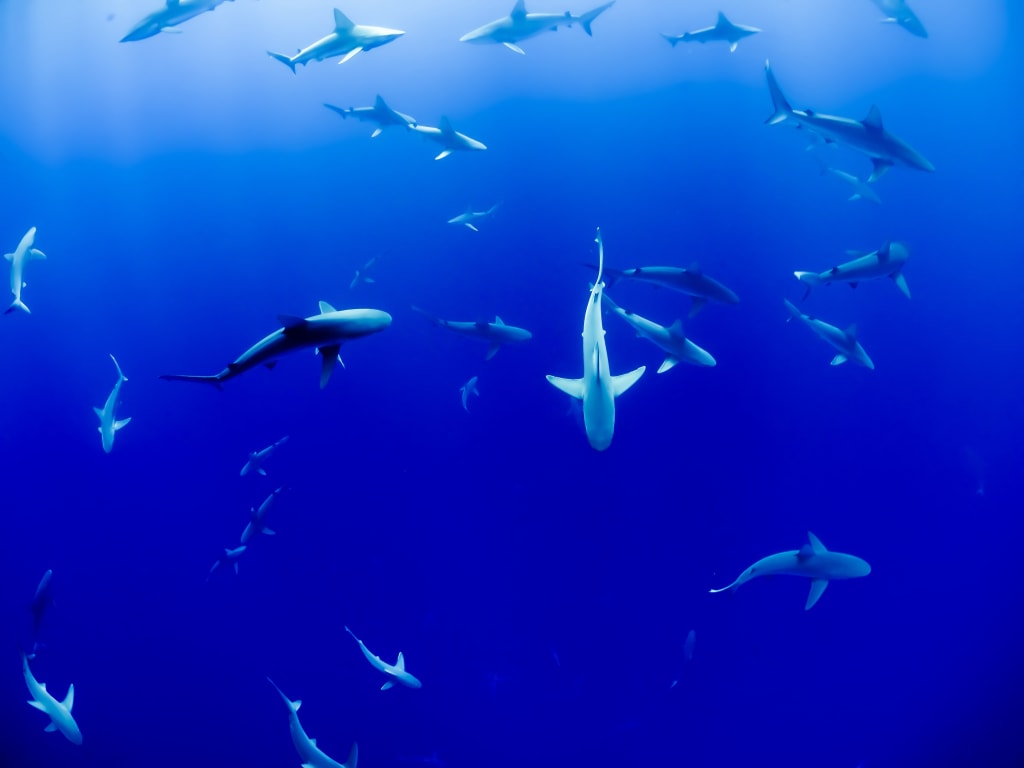
Curiosity as a young child came with the territory for Aesop. That extended to sharks because of all the tales that he heard from his mom, Pamela, who often used scary tales as a disciplinary tactic. She told him that disobedient children were vulnerable to shark attacks whenever they visited the beach.
Although Aesop remained skeptical, he was unable to disprove his mom’s theory. As the years passed, Aesop began to dig a little deeper and ask himself many questions. How could sharks be smart enough to know which kids were culpable? And why did some sharks wait until children became adults to attack them? Could sharks have such great memories that if children were a little naughty at the age of 5 or 6, they could still attack them 25 years later?
Despite his doubts, Aesop understood that he needed to hedge in case the legend proved to be correct. As a result, each summer, he would visit one of his favorite docks to watch baby sharks swim by late at night. He would talk to the baby sharks and let them know that his behavioral digressions were minor and not worthy of an attack.
Aesop loved talking to these young sharks because they had a long lifespan ahead of them and would have lots of opportunities to spread his story to other sharks. To solidify his relationship with the sharks, Aesop fed them bait scraps.
The strategy worked well in Aesop’s mind because he never experienced any shark encounters during his visits to the beach with his mom. Aesop was proud of his negotiation skills and felt he had beaten the system since his behavior as a child was less than exemplary.
It was clear to him that those baby sharks had relayed his message. All was well until his best friend Eric suffered a shark bite. Eric required stitches and multiple surgeries. Aesop went into a deep depression, thinking that he should have also been negotiating for all the children in his neighborhood and not just for himself.
How could this happen? It was simple, Aesop lied to the sharks, and now his poor well-behaved friend Eric paid a heavy price for his transgression. The guilt Aesop experienced soon became unbearable. Not surprisingly, the next time he went to the beach, he told the sharks, his behavior was less than perfect, but the good kids in his neighborhood should be off-limits.
Of course, Aesop had a secret plan. He chose to avoid going in the water to save the neighborhood kids. Over time, Aesop’s fears intensified, which made him even more determined to stop going in the water during his beach visits.
Sadly, as Aesop grew, he became aware that sharks were not killing machines. They did not keep records of the children’s behavioral patterns. Unfortunately, by the time he had debunked all these false theories, it was too late to regain all the years of enjoyable swimming he had lost.
Aesop also learned that only a small subset of the 500 shark species exhibited aggressive and dangerous behavior toward humans. Those included: The Great White Shark, The Striped Tiger Shark, The Bull Shark, The Sand Tiger Shark, and The Black Tip Shark. And even among those deadly species, a person could minimize (but not eliminate) the risk of being bitten if they figured out a way to respect their space and act in a non-threatening manner during encounters. Of course, when a person observes a Great White shark near them, it may not be easy to stay calm (unless one was a professional shark expert) and not do things that will either anger them or make them feel they need to attack to protect themselves.
According to Florida Museum National History's Shark Research, sharks in the U.S. kill an average of four people per year. In 2019 and 2020, those figures came in below average: at two and three deaths, respectively. Given the millions of sharks killed each year after becoming trapped in the nets of professional boats, it is difficult to view sharks as the real enemy.
Finally, crime statistics reveal that in 2019 and 2020, the U.S. suffered 16,245 and 21,000 murders, respectively. Most of us continue to interact with people despite this high level of mayhem, so why can’t we find a way to coexist with sharks that kill far fewer of us each year?
About the Creator
Anthony Chan
Chan Economics LLC, Public Speaker
Chief Global Economist & Public Speaker JPM Chase ('94-'19).
Senior Economist Barclays ('91-'94)
Economist, NY Federal Reserve ('89-'91)
Econ. Prof. (Univ. of Dayton, '86-'89)
Ph.D. Economics
Enjoyed the story? Support the Creator.
Subscribe for free to receive all their stories in your feed. You could also pledge your support or give them a one-off tip, letting them know you appreciate their work.






Comments
There are no comments for this story
Be the first to respond and start the conversation.